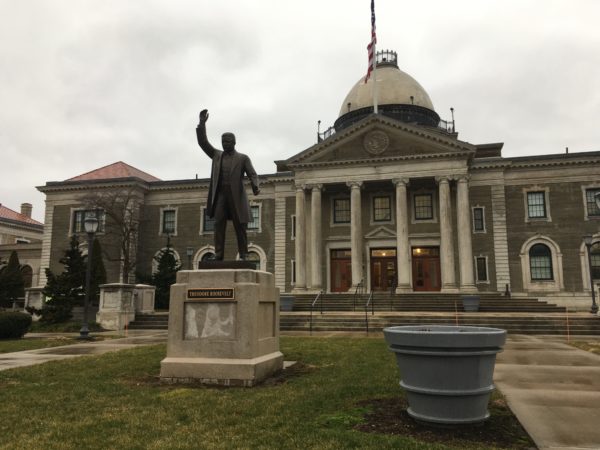Detailed data from the 2020 U.S. census showed that Nassau County’s white, non-Hispanic population decreased by nearly 10 percent, while its Asian American population increased by more than 4 percent.
The data, on the New York state comptroller’s website, breaks down the shifts in demographics, housing and overall population since the 2010 census. Nassau County’s total population increased by more than 56,000, or 4.2 percent, over the 10 years, and is less than 5,000 away from surpassing 1.4 million residents, according to the data.
The county’s non-Hispanic white population decreased from 65.5 percent in 2010 to 55.8 percent in 2020. In 2010, Asian Americans made up 7.6 percent of Nassau’s population, which increased to 11.7 percent in 2020.
The Hispanic or Latino population increased by more than 31 percent, growing from 14.6 percent in 2010 to 18.4 percent in 2020. While data showed that Nassau’s Black population remained at 10.5 percent over the decade, it did increase by 4.2 percent.
The Town of North Hempstead, which had a 5 percent increase in total population to more than 237,000 residents, saw similar trends. The town’s white, non-Hispanic population decreased from 64.8 percent in 2010 to 53.9 percent in 2020, according to the data. Its Asian American population rose from 14.9 percent to 23 percent over the past decade, a 62 percent increase.
Hispanics or Latinos made up 12.8 percent of the town’s population in 2010, growing by more than 20 percent over the past 10 years to 14.8 percent. Its Black population declined from 5.3 percent in 2010 to 4.8 percent in 2020, statistics showed.
Other races not specified in the census data increased in the town by more than 138.6 percent throughout the town, jumping from 691 in 2010 to 1,649 in 2020. Individuals with two or more races nearly doubled over the past decade, growing from 3,872 in 2010 to 6,424 in 2020.
Various villages in the town saw drastic decreases in their white, non-Hispanic populations over the decade, headlined by Lake Success’ 45.9 percent decrease. In 2010, according to statistics, the village had more than 1,900 white, non-Hispanic residents. A decade later, that number decreased to 1,039. Lake Success’ Asian American population more than doubled in that time, jumping from 791 residents in 2010 to 1,587 in 2020.
The Villages of South Floral Park, Russell Gardens, Thomaston and New Hyde Park also saw decreases of more than 20 percent to their white, non-Hispanic populations over the decade. Those villages also saw increases of more than 60 percent to their Asian American populations over the same period, according to statistics.
Asian American populations increased by more than 50 percent in most of the North Shore, with the villages of East Williston, Plandome, Kensington, Great Neck Plaza, Munsey Park, Russell Gardens, Plandome Heights, Great Neck, Lake Success and Great Neck Estates showing increases of more than 100 percent since 2010.
The villages of Roslyn, Kings Point, Mineola, South Floral Park, Saddle Rock, Floral Park, East Hills, Thomaston, Plandome Manor, Williston Park, Roslyn Estates, New Hyde Park and Flower Hill saw increases of more than 50 percent to their Asian American populations.
Hispanic or Latino populations in the villages of Kings Point, Roslyn Estates, Plandome Manor, Plandome, East Hills, Williston Park, Roslyn, Plandome Heights and Great Neck Estates grew by 50 percent since 2010, statistics showed.
Black populations grew by at least 50 percent in the villages of Roslyn Estates, Kings Point, Plandome Manor, New Hyde Park, Mineola, Sands Point, Great Neck Plaza and Russell Gardens over the decade, according to the figures.
Lawrence Levy, executive dean of the National Center for Suburban Studies at Hofstra University, said these trends in Nassau County are indicative of larger ones seen in suburbs across the country. Levy said Nassau County and the North Shore, specifically, have become “magnets” for Asian Americans due to their abundance of quality education, homes and environments.
“Nassau County is giving these people what they are looking for in terms of the ‘suburban dream,’” Levy said in a phone interview. “Asian Americans have been part of literally changing the face of suburban communities all over the country. Fairfax, Virginia, for example, is heavily Asian and that’s affected everything from what is taught in schools to politics.”
Levy said the shifting demographics helped Fairfax and Loudoun County turn into a Democratic voting area that even survived an influx of Republican voters during the past election. The demographic shifts are also prominent in the suburbs outside of Philadelphia and a number of other communities throughout the nation, Levy said.
On the North Shore, Levy said, more Asian Americans and others in minority populations will run for office as they become more involved in the area and encounter others who share the same concerns.
“You’re going to see more and more Asian Americans compete with non-Asian Americans and even with other Asian Americans,” he said. “There’s no doubt that there has been a continued surge of Asian Americans to Long Island. Whether it’s a few percentage points undercounted doesn’t change that. The influence has been profound.”



